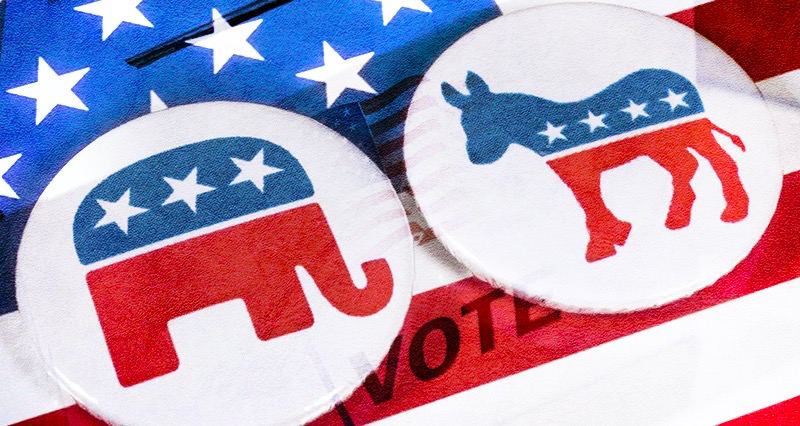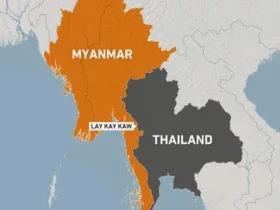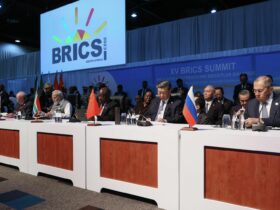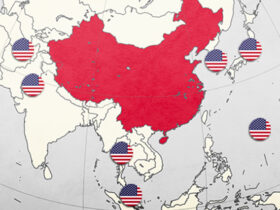By Sergio Rodríguez Gelfenstein
The upcoming elections in the United States must be seen in the framework of some facts that signal important changes in the political dynamics and that, if not considered, could generate confusion in the analysis, since there is an overlap of ideas or currents of thought. The scenery forces us to understand the United States – in an increasingly necessary way – as a heterogeneous actor in which various contradictory forces coexist defending diverse interests.
This is manifested, for example, in issues such as freedom of expression and the functioning of the media and press, where very profound changes are taking place with enormous influence on the elections. Likewise, it influences the debates on the behavior of the media that are assumed today by liberal democrats as if it were an immovable precept of their proposal. For this reason, the media gives space to democrats against and in favor of the war after a supposed freedom of expression. This posture in reality hides the fact that the media have lost their status as “autonomous entities” free of any control, from the moment they support political positions of one or the other side.
To that extent, everyone in the United States knows that The New York Times favors the Democrats and the Washington Post favors the Republicans. It is the American version of “freedom of expression” to cover up the fact that both support different factions of power.
Trump’s assumption of a speech against the war in Ukraine produces a political split in society, difficult to understand because the slogans and myths have built the idea that the Democrats have been the maintainers of the liberal order and the Republicans the exponents of conservatism. And being able to accept that at some point in the past that may have been true, today that is no longer the case. Looking ahead to the elections, this situation forces us to carry out a deeper analysis of what is happening in the United States to understand the alliances that are taking place and understand who will really assume power in the near future.
Currently, a superposition of forces is being generated that are organized in different ways in the American political spectrum, surpassing the traditional bipartisan grouping. This, which is manifested most strongly on the Republican side (today captured by Trump), is forging a division between the neoconservative sector and the traditional isolationists and nationalists who have put the national interest above the global interest. In this sense, it could be said that there are Republican sectors that are no longer so “conservative.” This is an abnormality within the system.
During the time of dominance of the Bush clan, neoconservative control of the Republican Party and therefore of the government, was evident, but a change has been taking place that has led to the neoconservatives today covering up the bipartisanship, reaching a situation such that even it could be said that recently, the Democratic Party has become much more strongly imbued with this idea.
As an effect of this trend, today, there are neoconservatives (neocons) in both parties. Such a propensity began to be seen around the time Barack Obama took control of the Democratic Party (DP). At first, this was thought that as a result of a coming paradigm shift within the blue party. On the contrary, in this period the foundations were laid for the construction of “a single party” to sustain the system or “establishment.”
However, the former president and candidate has been skilled enough to take note of the growing deficiencies that in American society are affecting important sectors of the rural white population that the DP impoverished, also affecting blacks and other minorities. This is what explains the designation of JD Vance as a vice presidential candidate.
Vance, coming from a fragmented family in a small town in the rural world of the northeastern United States, very religious and deeply marginalized, has been characterized by exposing a discourse of rejection of the “dominant class” of the United States. On top of that failure has Washington, according to Vance, signed agreements with Mexico and China that are openly negative for the United States and favorable to those countries.
The now Republican vice-presidential candidate believes that this “further destroyed the good manufacturing jobs of the American middle class.” Vance has also rejected the “disastrous” invasion of Iraq, especially because the children of the farmers of the northeastern United States were unnecessarily sent to a senseless war.
Vance, a young politician who projects leadership for the future of the RP (which the DP does not have), has also expressed his rejection of what he calls the “green scam” of the Democrats. Meanwhile, he – thanks to Trump – assumes himself as “a working-class kid born far from the halls of power [who] can be on this stage as the next Vice President of the United States of America.”
He has also expressed his rejection of Wall Street, whom he blames for having left American builders out of business and responsible for “flooding” the country with illegal immigrants, forcing Americans to have to compete with people who should not be in the country.
He has blamed Biden for allowing China to ship fentanyl with the goal of getting many young people addicted. Vance has said he and Trump have made a commitment to workers, eliminating the “importation of foreign labor” in order to fight for American citizens, good jobs and wages.
Likewise, he promised to stop buying energy from countries “that hate us” because they are going to produce it in the United States. Likewise, he promised the reindustrialization of the United States by preventing “the Chinese Communist Party from building its middle class at the expense of American citizens.” Additionally, he proposed ensuring that America’s allies “share the burden of ensuring world peace.”
Beyond the real possibility of fulfilling these promises, it is necessary to bring up Vance’s ideology because it represents the true thinking of Trumpism and the Republican Party away from the traditional neoconservative paradigm. From my point of view, these approaches indicate the direction of the ideology of the United States in the coming decades.
The neocons’ attempts to remain in the elite were manifested in Nikki Haley’s decision (one of its most conspicuous representatives) to remain in the RP’s internal race, despite her imminent defeat to Trump. Haley defended the war in Ukraine, the American Israel Public Affairs Committee (AIPAC) and the Military Industrial Complex (MIC).
But now, Trump doesn’t need them, especially when he saw Biden’s fall after the debate. Nor does he think he will have problems in the confrontation with Kamala Harris. Deep down, Trump thinks that the neocons betrayed him, in particular John Bolton, who has become one of his fiercest opponents. This is also why he rejected the much-hyped Marcos Rubio as a vice presidential candidate.
In this sense, it is interesting to follow up on what happened with the journalist Tucker Carlson, who has maintained his line of support for Trump and in maintaining the anti-neocon and anti-elite approach against the MIC and the pharmaceutical industry. Carlson, despite having the most watched program on American television on the Fox Network, was fired for his support of Trump. This is proof of the farce of freedom of expression and the autonomy of the media. Now, after Vance’s appointment, all the attacks have focused on him. However, the attacks on Carlson and Vance, actually directed against Trump, have failed.
In the opposite trench, after the designation of Kamala Harris as the Democratic candidate for president, the entire establishment media apparatus has turned to her favor. They have centralized the discourse and have built a large bubble aimed at demonstrating that there is a “technical tie” between Trump and her in the polls. Indeed, support for the DP rose in the polls after the “rebirth” that produced Biden’s decline, but this increase is not higher than the figures that Biden had at the beginning of the year.
The problem now is knowing what will happen when the bubble returns to its natural state. That involves knowing how much influence Harris can have and how much force she can accumulate to cast doubt on the Republican’s election. There is no indication that Harris could be a threat to Trump. But we will have to wait to find out because today there is a “honeymoon” between her, the media and the pollsters that are openly favoring her.
Many think that Michelle Obama would have been more competitive than Harris against Trump. It seemed that the DP would go into a strong internal confrontation for the appointment of its candidate, but something unexpected happened: There was some negotiation to prevent the appointment of the Democratic candidate from being as traumatic as possible.
To oppose Trump, Harris appointed a vice presidential candidate with similar characteristics to the Republican candidate: Tim Walz, governor of the state of Minnesota. Like Vance, Walz comes from a rural area, like Vance he served in the military, and like Vance he was almost unknown outside his state.
Although Vance is a senator and Walz is a governor, neither of them belongs to the Washington power establishment. Without being as young as Vance (40 years old), Walz (60 years old) aims to project a new face for the future of the Democrats. In the political codes of the United States, Walz is considered a liberal (progressive?) through which the DP tries to attract the youth sector that is grouped around Senator Bernie Sanders and who has been deeply critical of Biden, especially for his support for Israel.
Regarding possible alliances, it is worth knowing that Trump offered the vice presidency to independent candidate Robert. K Kennedy. Both leaders talked and expressed affinities, for example they agreed on the need to support Israel and the rejection of the neocons, but finally, Kennedy rejected the appointment. It must be remembered that he tried to be a candidate for the DP, but the establishment of this party denied him the possibility of participating in the primaries, forcing him to become an independent candidate.
In short, we are at a moment in the United States campaign in which a charismatic Trump faces a fragile Harris, artificially supported by the media. By decision of the DP, she performed her duties as vice president with a very low profile. Now, that is going to “take its toll” on his presidential aspirations.

















Leave a Reply